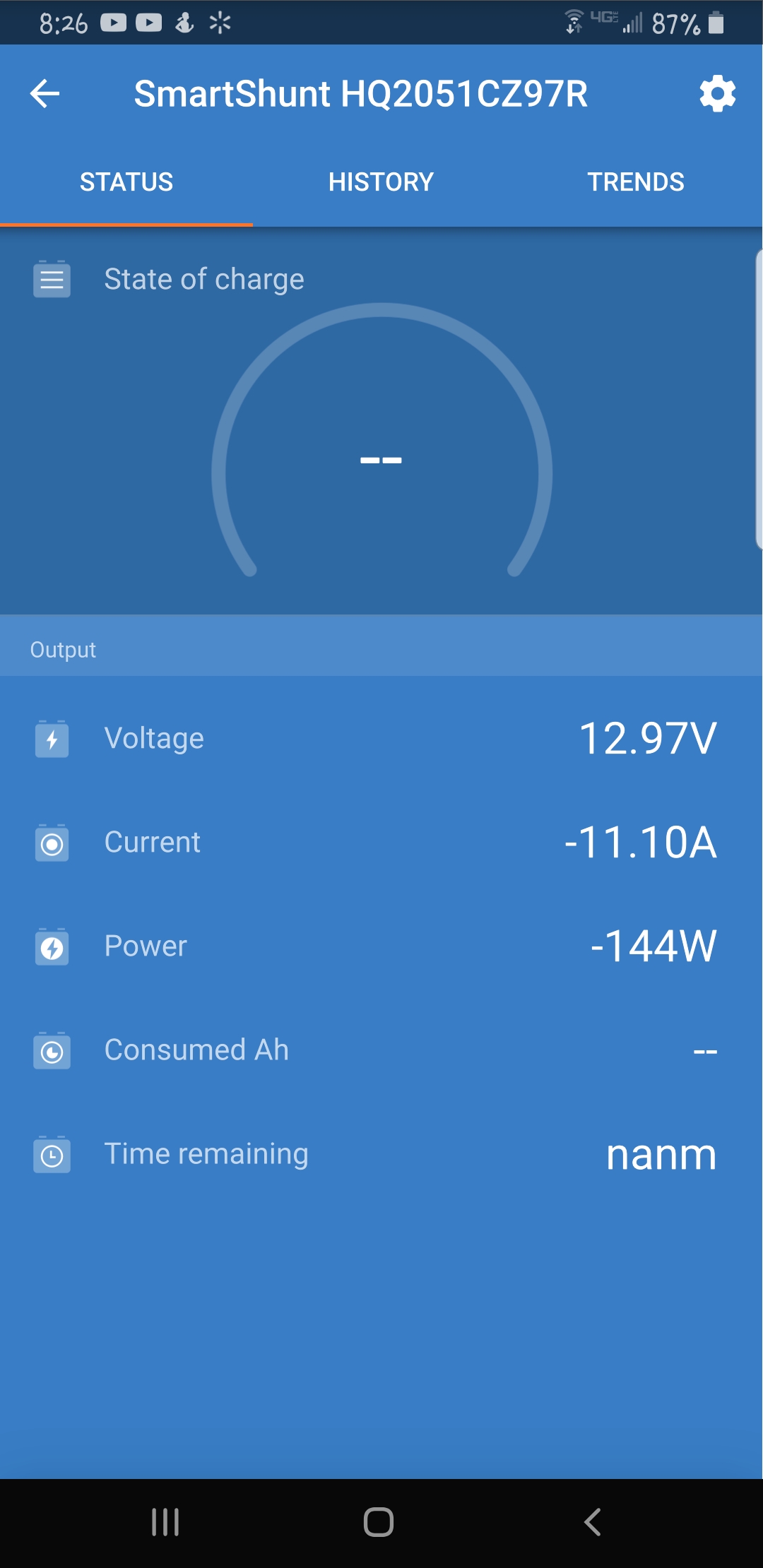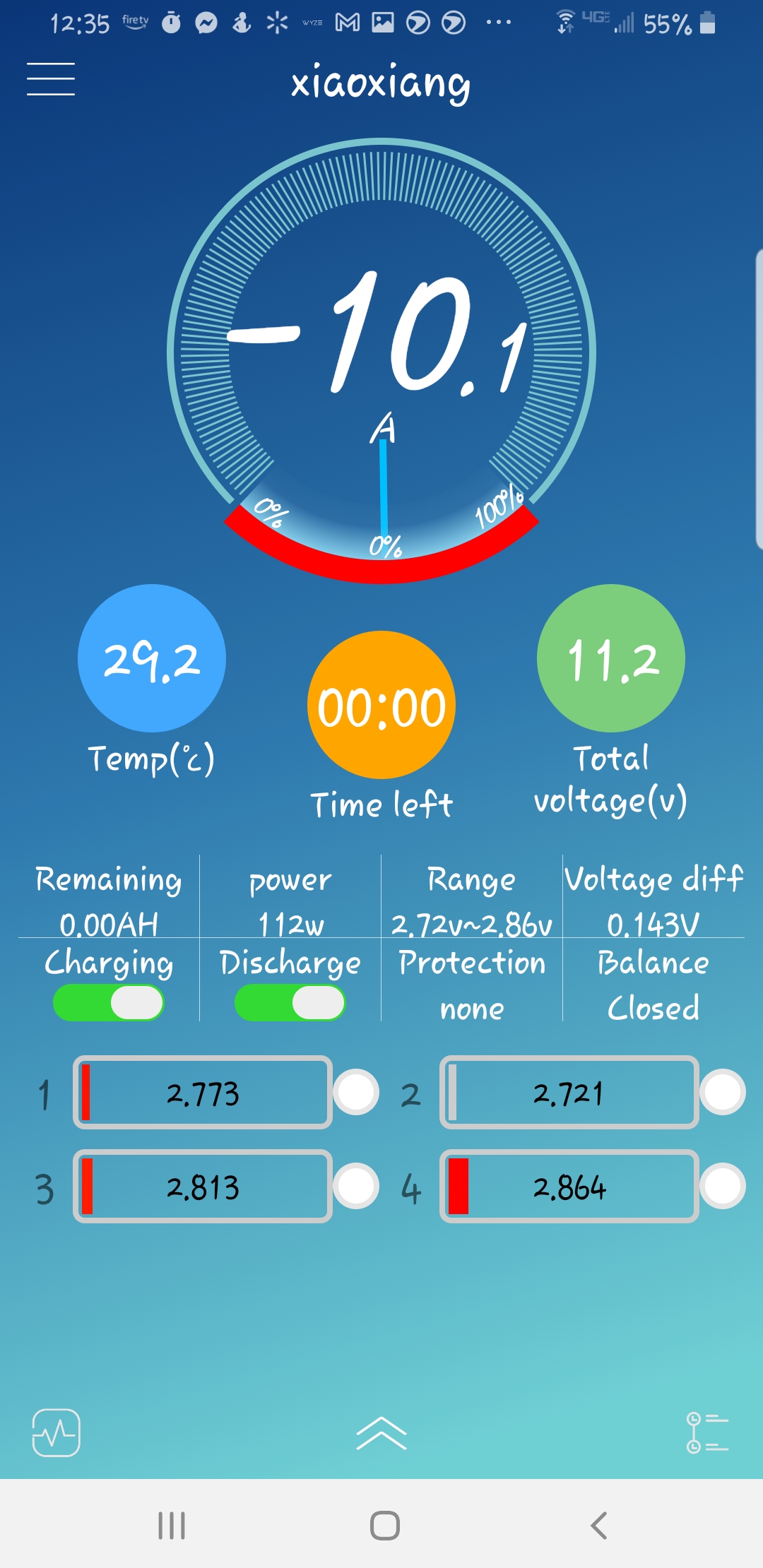My smart shunt has reporting or other issues. It works perfectly for 1-4ish days. Then the SOC goes blank (see attached pic). Voltage, current, and watts still report. The SOC also disappears from VRM and my Cerbo screen when this happens.
If I charge the batt fully, and click "Synchronize" to 100%. The SOC goes to 100% and counts up/down according to the charge/draw occurring. The SOC will report for 1-4ish days and then go blank again.
Do I have a bad smart shunt? What follow up or testing can I do to determine or fix the issue?




